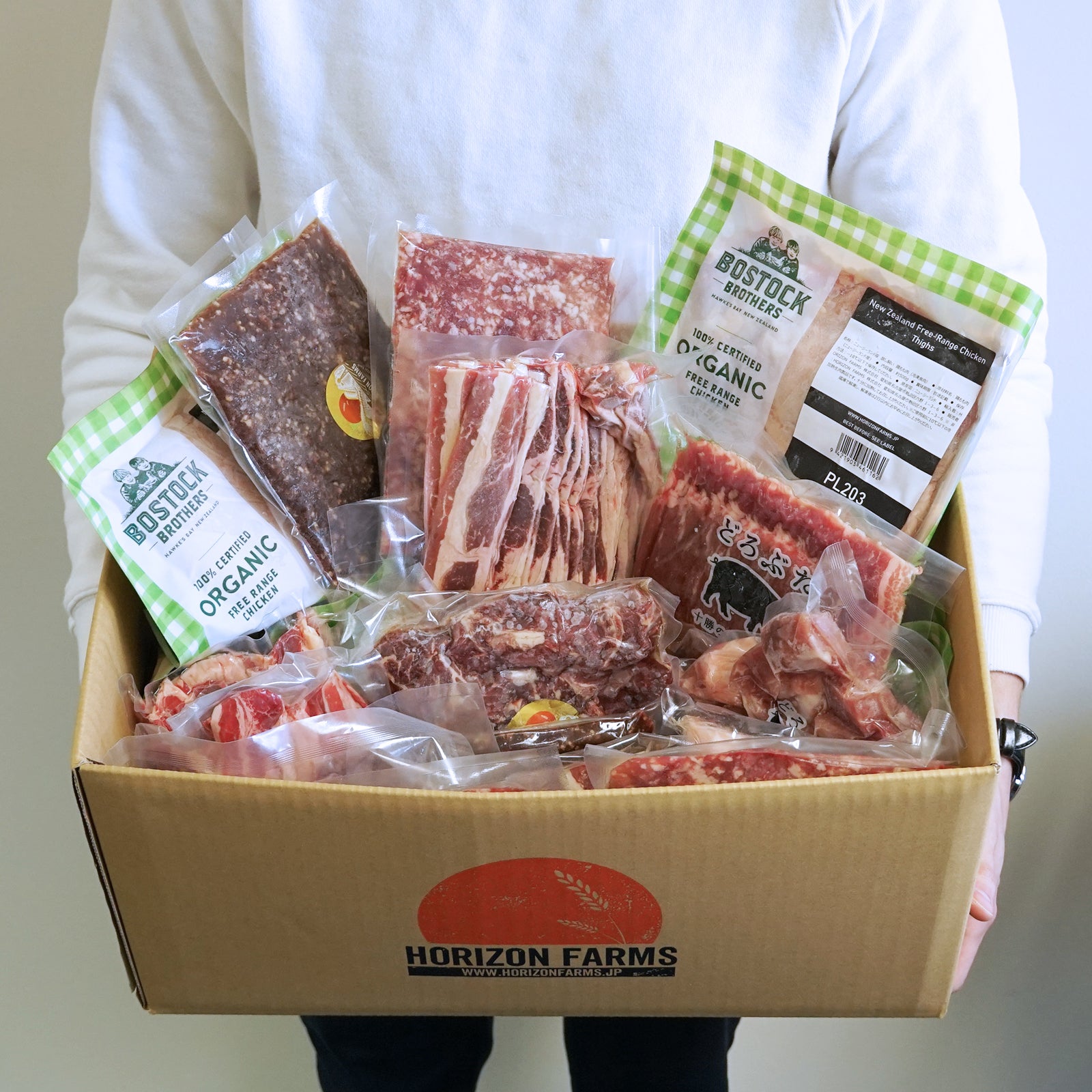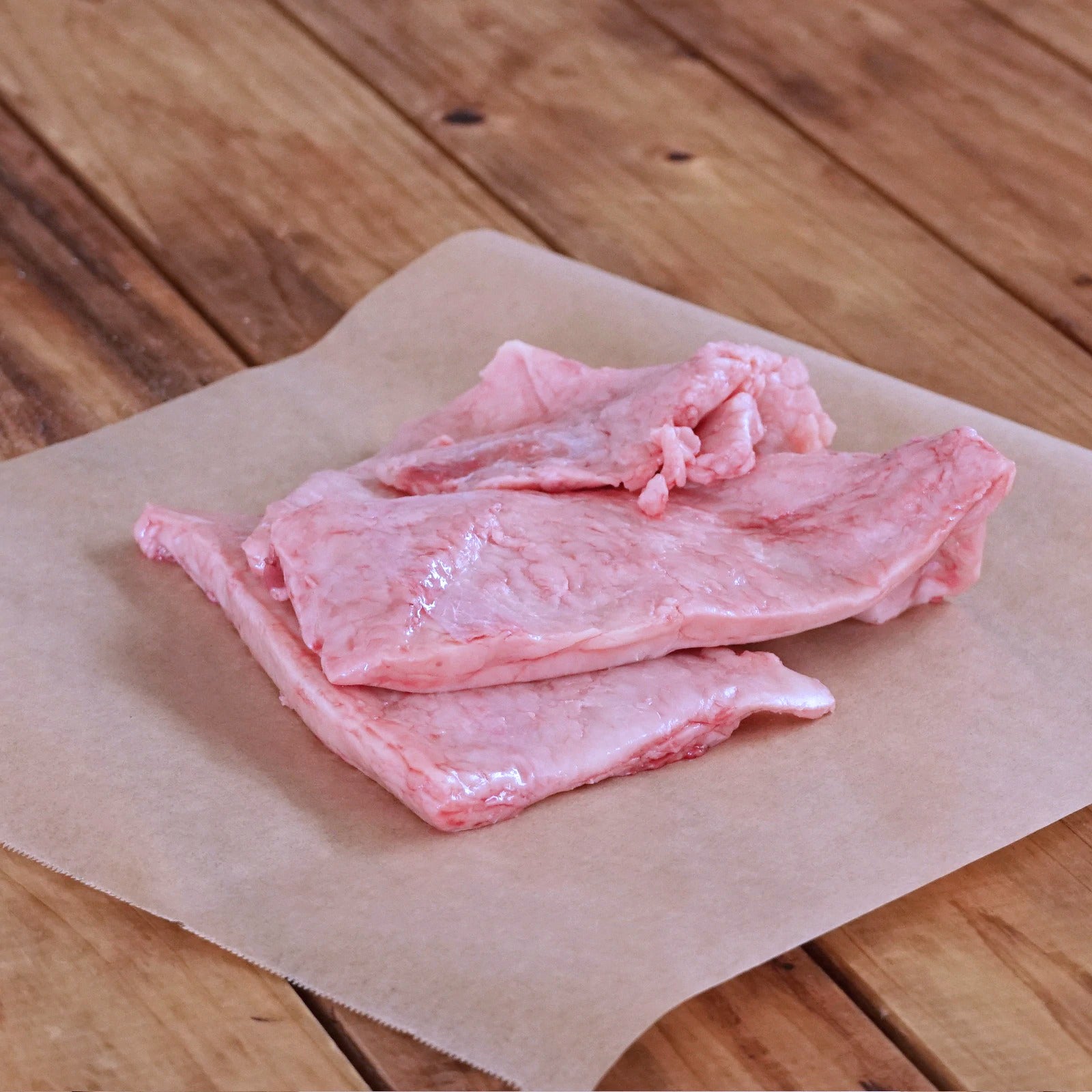
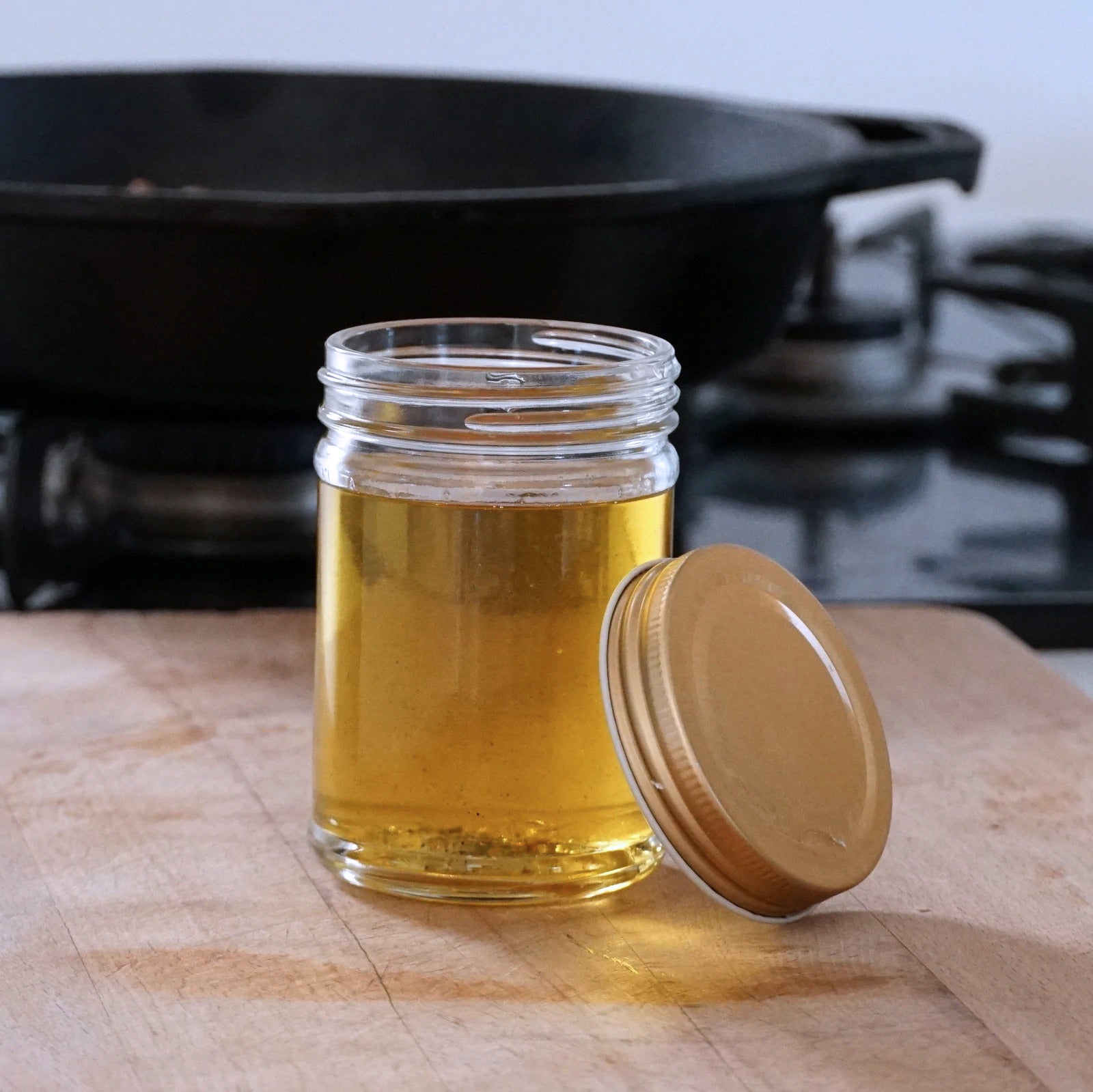
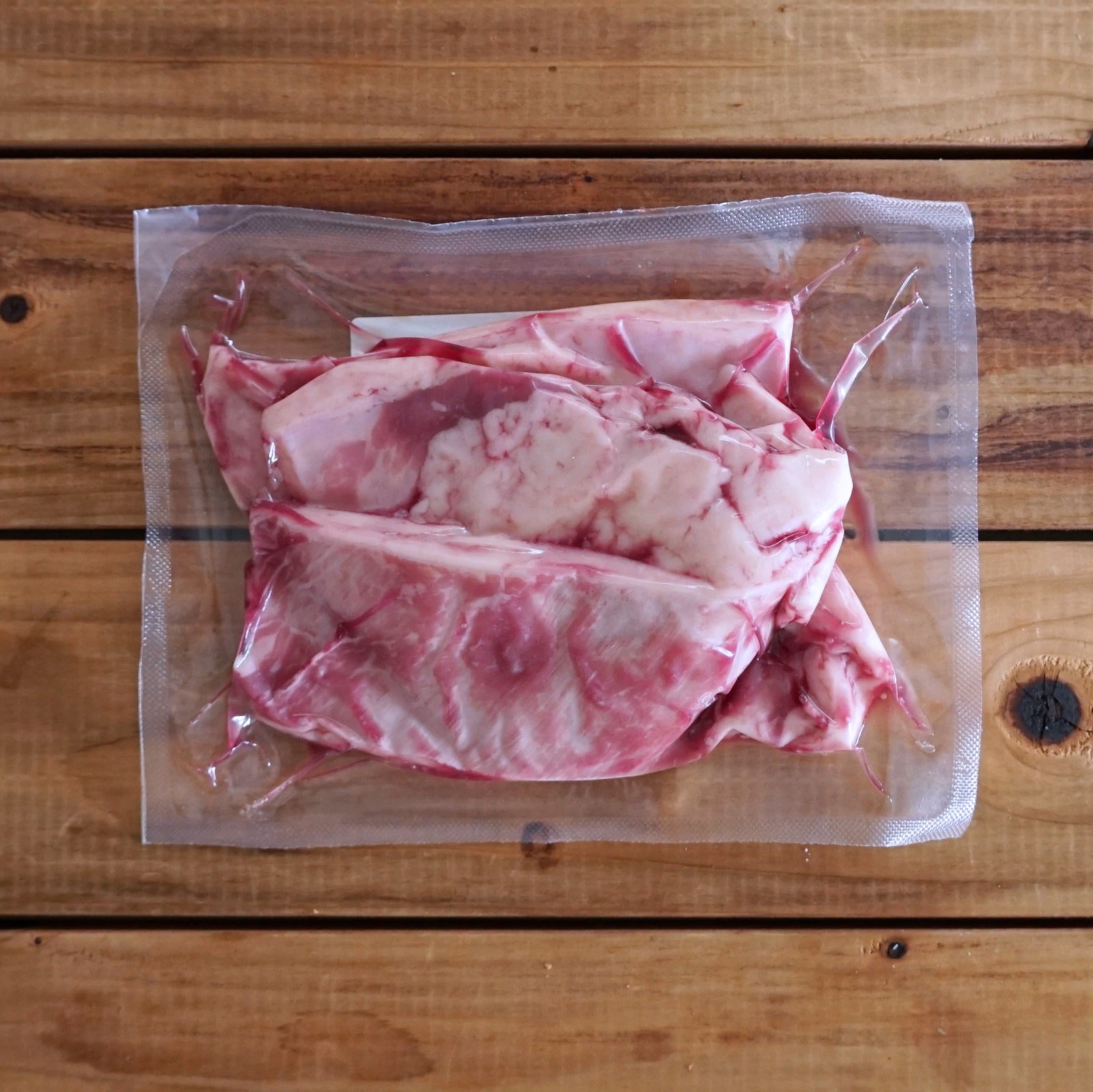
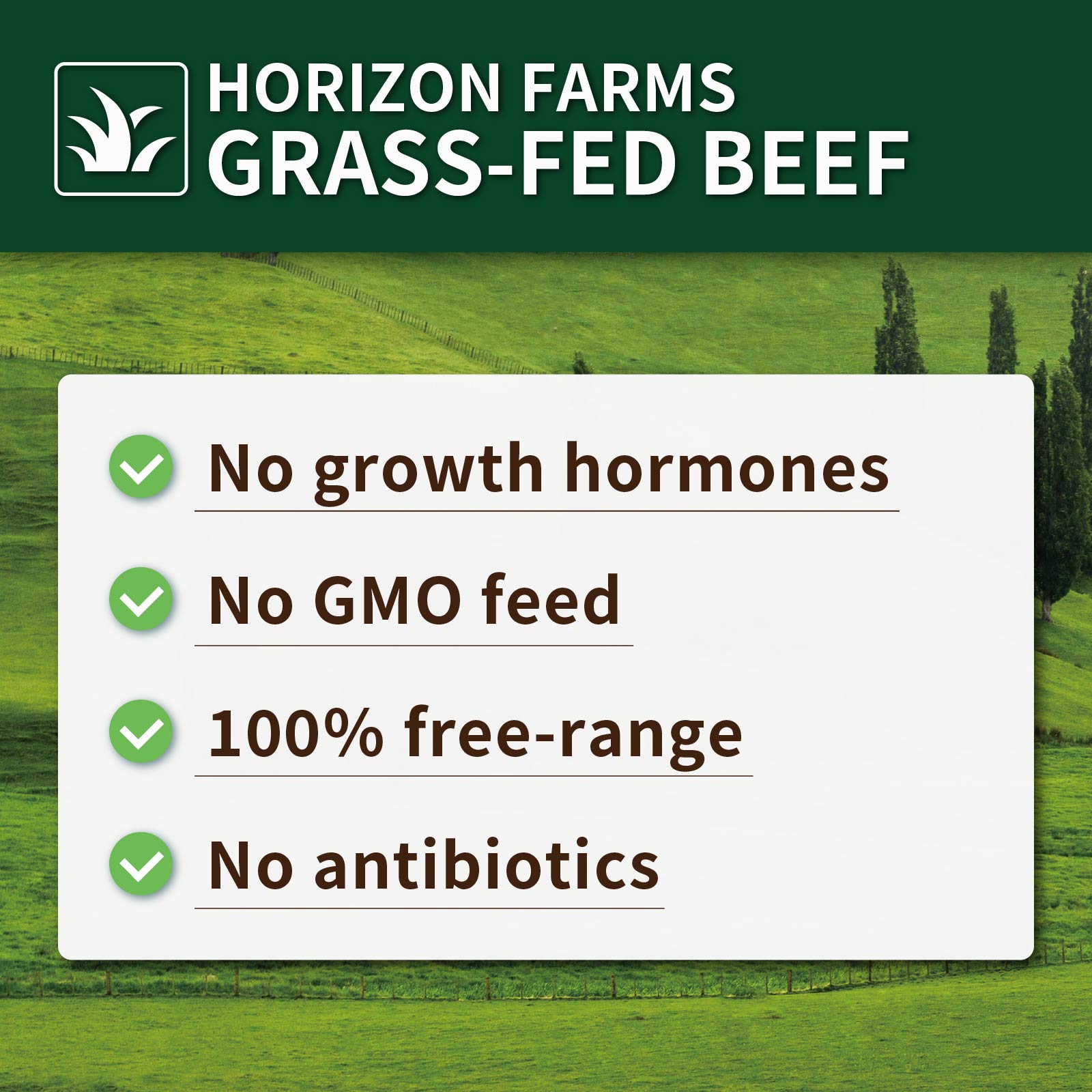
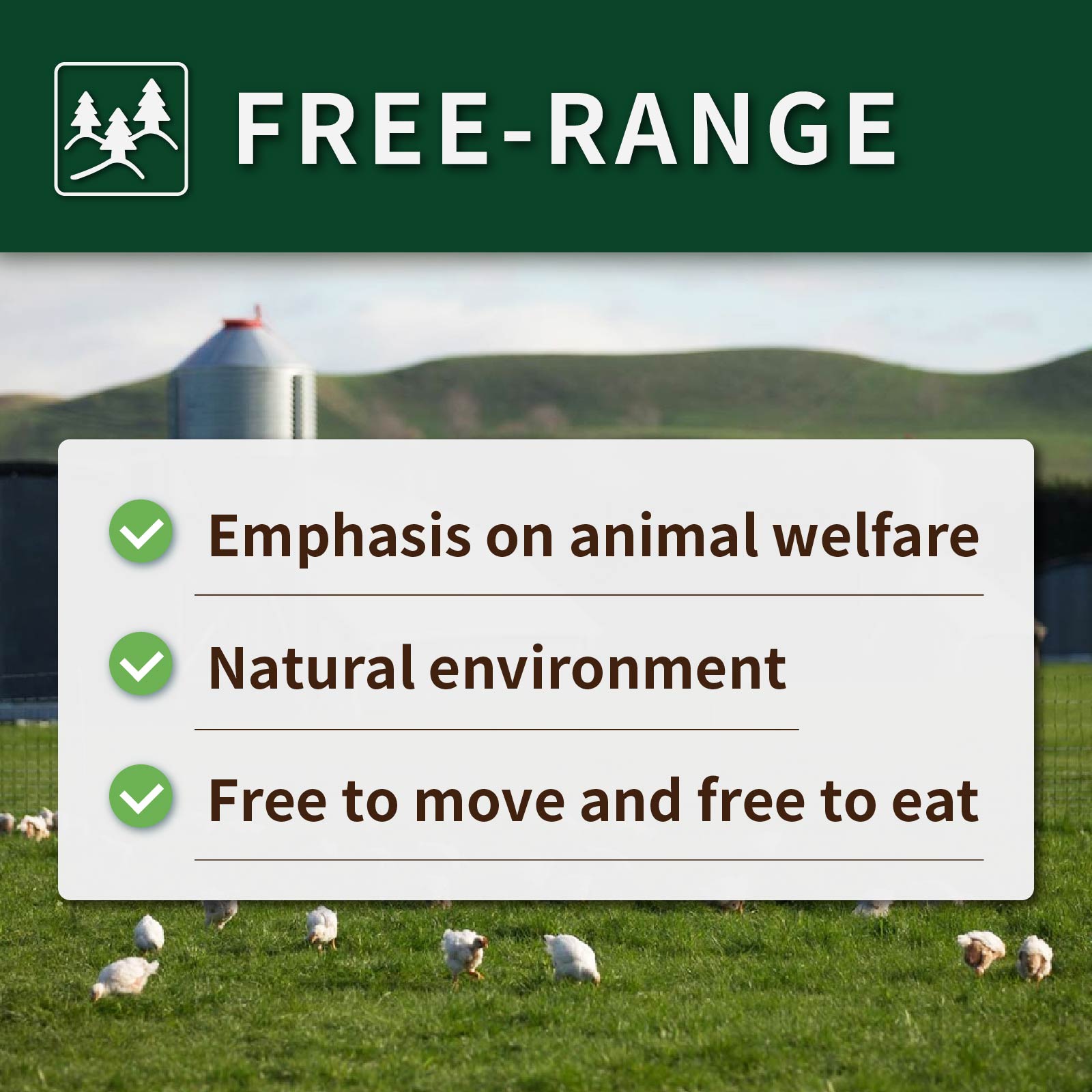
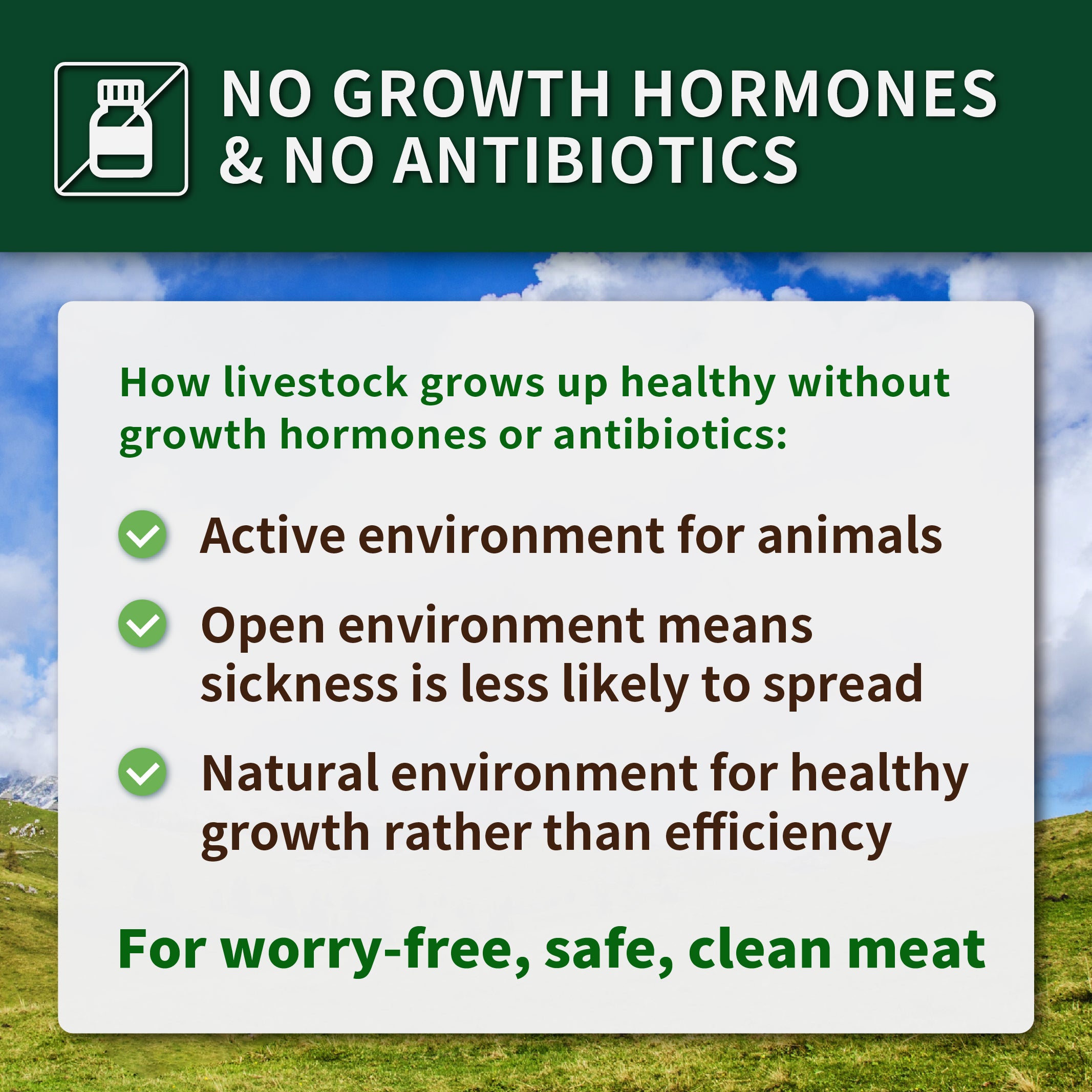
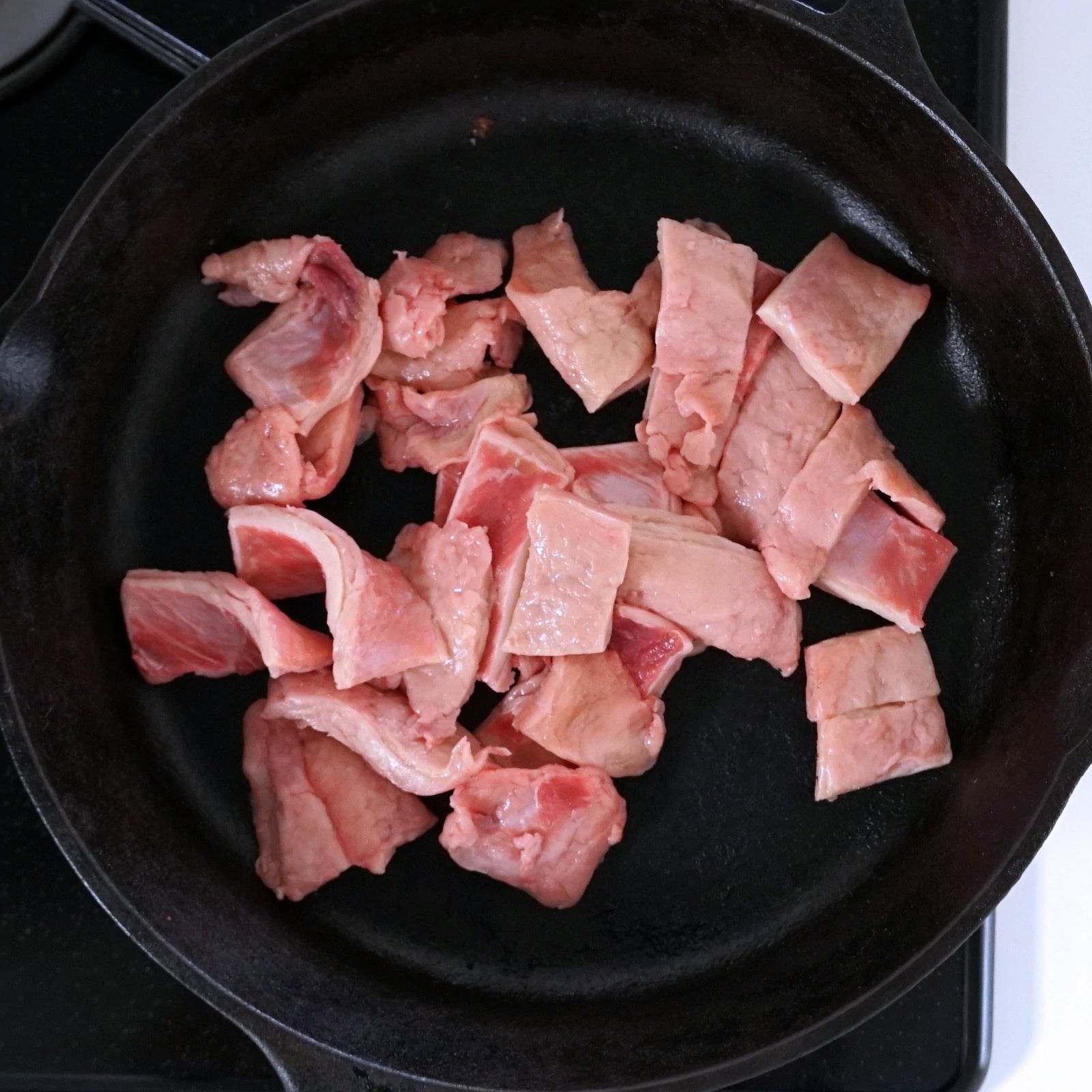
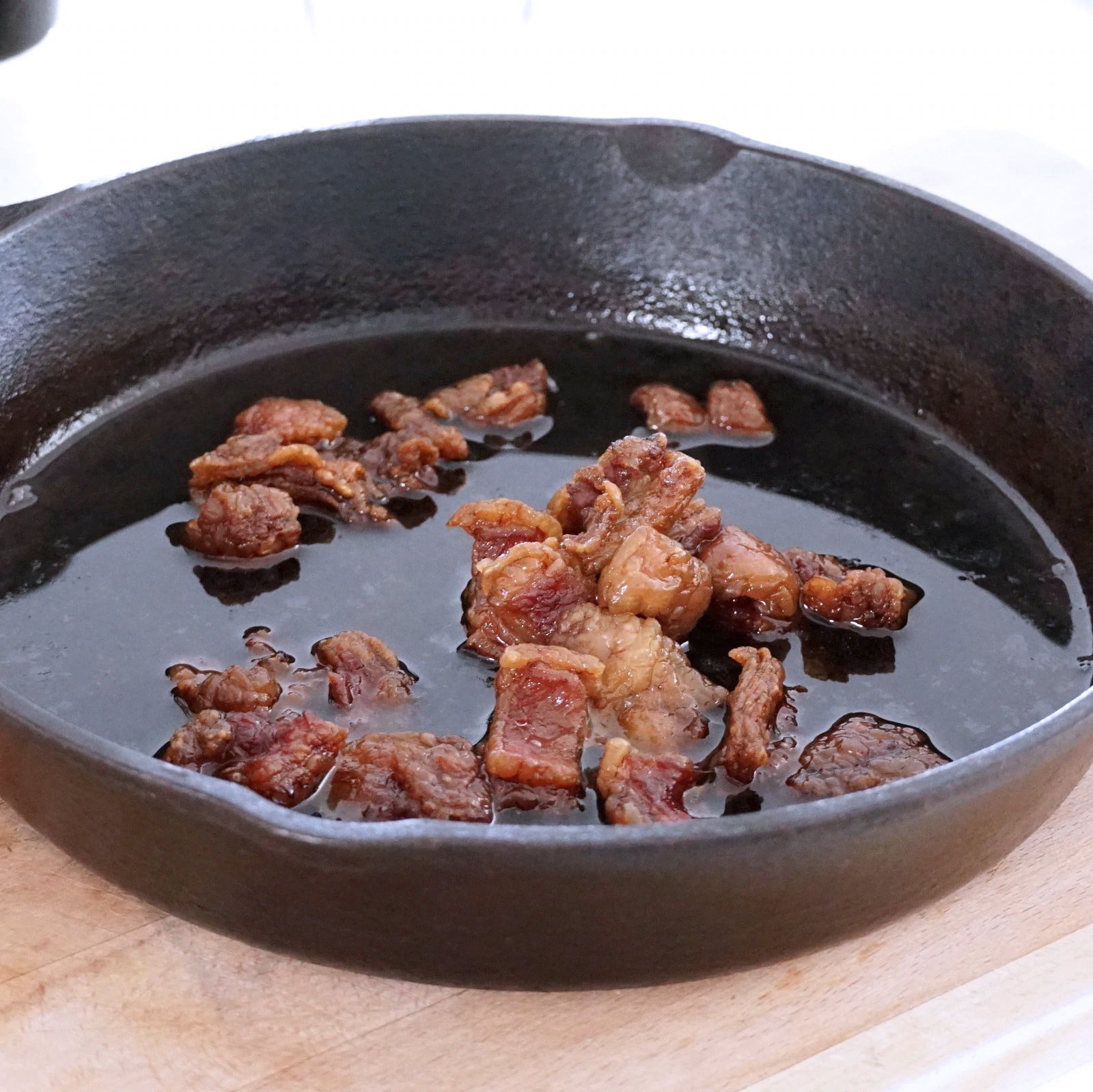
Horizon Farms
Grass-Fed Pasture-Raised Beef Fat (250g)
Choose options
Please note that there may be meat remaining with the beef fat. Please cut off and use as desired.
These are the fat trimmings from the striploin, ribeye, tenderloin, or rump. Whenever we process the larger blocks of meat into smaller portions, we have fat trimmings that are leftovers. Beef fat needs to be rendered first for best use. Cook slowly over low heat until it becomes a liquid or better cook in the oven under low temperature for 90 minutes. Store the liquid fat into a glass jar and freeze or refrigerate for later use. See the instructions below. Grass-fed beef tallow is high in conjugated linoleic acid, B vitamins, vitamin K2, niacin, selenium, iron, phosphorus, potassium, and riboflavin. Natural saturated fats are healthy and important, tallow is a great option to use for pan-frying vegetables or pan-searing steaks.
Grass-fed pasture-raised beef from Australia and New Zealand - the land of grass-fed beef. This is not only grass-fed beef, but this is also free of antibiotics, growth hormones, and free of GMOs - if you are looking for clean grass-fed and grass-finished beef with a high red meat to fat ratio this is your best choice.
Contents
| Contents | 1 Pack |
| Weight | 250g (8.8oz.) |
| Serves | Depending on the dish. |
Shipping & Handling
| Shipping | Shipping and delivery is frozen |
| Handling | Keep frozen below -18°C (0°F) |
| Defrosting Time | In the fridge: approx. 24h In ice-water: approx. 1h |
| Cooking Method | To use for pan-frying vegetables or pan-searing steaks. |
| Expiration | Frozen: see packaging label (usually more than 1 month) Chilled: Please consume unopened pack within 5 days. |
Details
| Also known as | Gyushi, beef fat, beef tallow, beef rendering, beef suet |
| Country of Origin | Australia or New Zealand |
| Ingredients | Beef |
| Cut from | Rump, Striploin, and Tenderloin |
| Category | Trimmings |
| Packaging | Vacuum packed |
At A Glance
| Cattle Breed | English Hereford and Black Angus Breed |
| Farm/Ranch |
Bass Strait Beef (Australia) Silver Fern Farms (New Zealand) |
| Farmers | Contracted small-scale family farms |
| Breeding | 100% free-range on open pastures for life. |
| Feeding | Grass-fed for life on open pasture. |
| Traceability | 100% fully traceable from farm to fork. |
| Growth-Hormones | Never |
| GMO-feed | Never |
| Antibiotics | Never |
| Pesticides | Never |
| Importer | Horizon Farms, Inc. |
| Processing in | Japan |
Cooking Instructions Recipe for Beef Fat

Defrost in the fridge or place the pack in cold water. Beef fat defrosts very quickly. Cut the pieces into smaller chunks. Our beef fat is very closely trimmed, there is nothing else you need to do. You can either render the fat in a fry-pan or in the oven. The fry-pan method will consume a larger amount of gas and in some households, the gas stove turns off after a certain amount of time. We recommend the oven method.
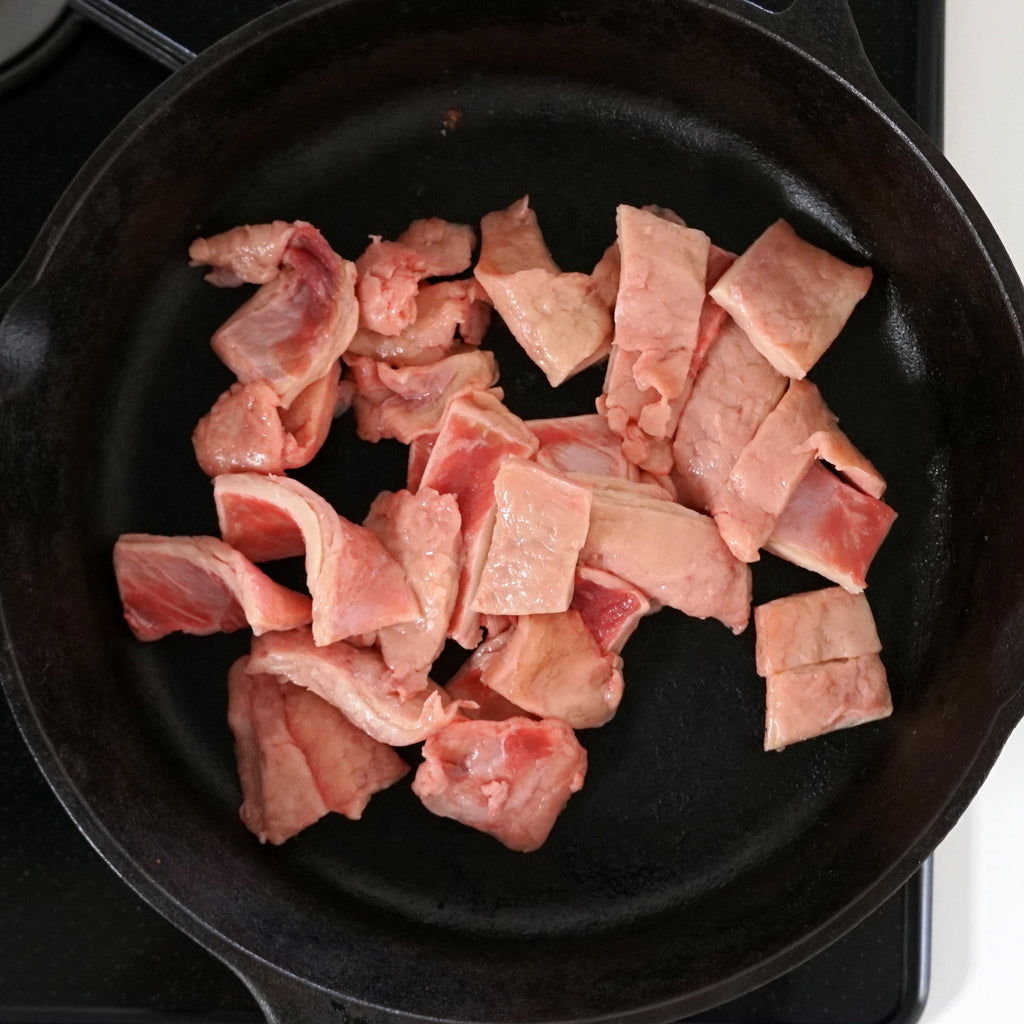
Place content in a pan or skillet. Make sure that it is suitable for oven use.

Preheat the oven to 130 degrees Celsius (250 Fahrenheit) and place the skillet in the middle. There is no need for a lid but can you use one. Let the beef liquify for around 90 minutes.

This is how beef fat looks after 90 minutes. Looks like tasty bacon. This could be used as cracklings though.

Use a sieve to filter out the larger chunks of fat. You will have a beautifully clear liquid of fat.
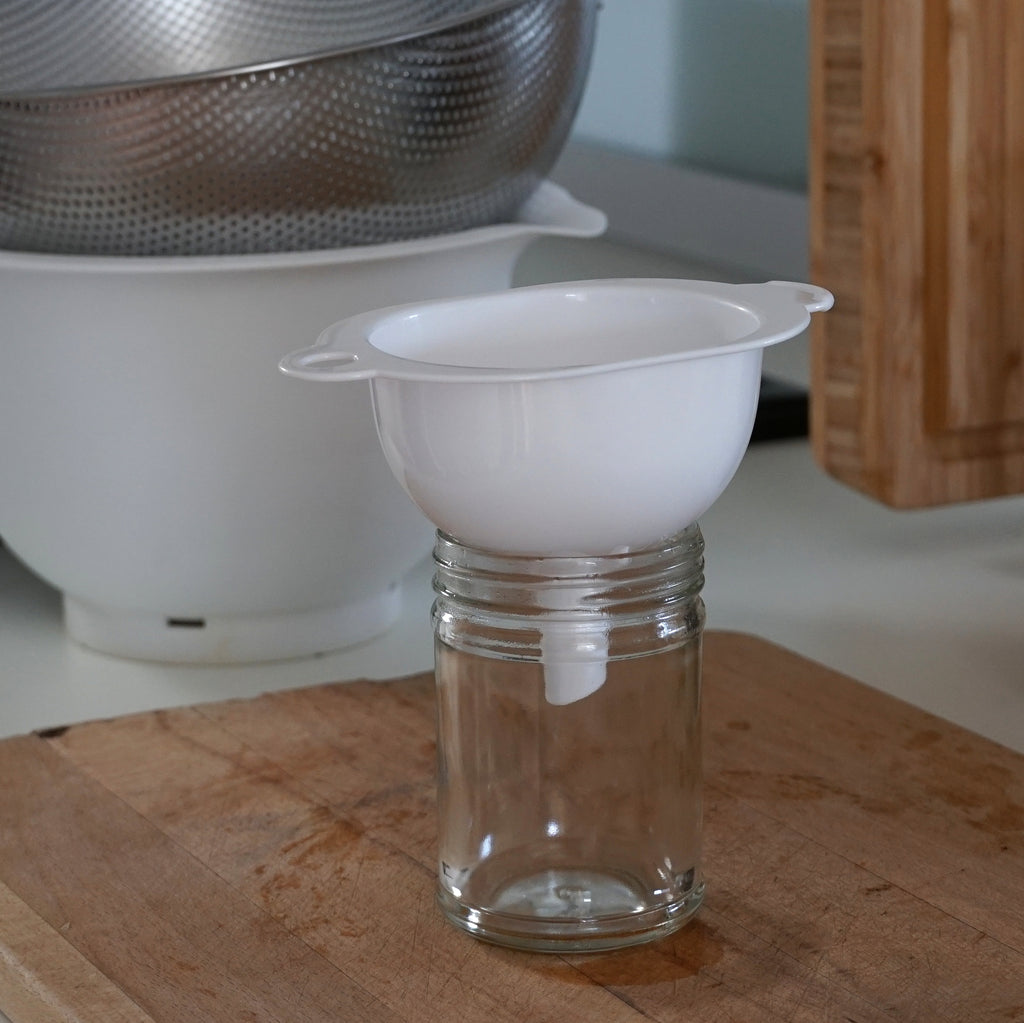
Next, you will need to store your beef fat. We highly recommend glass jars with a proper lid. They are inexpensive and last forever.
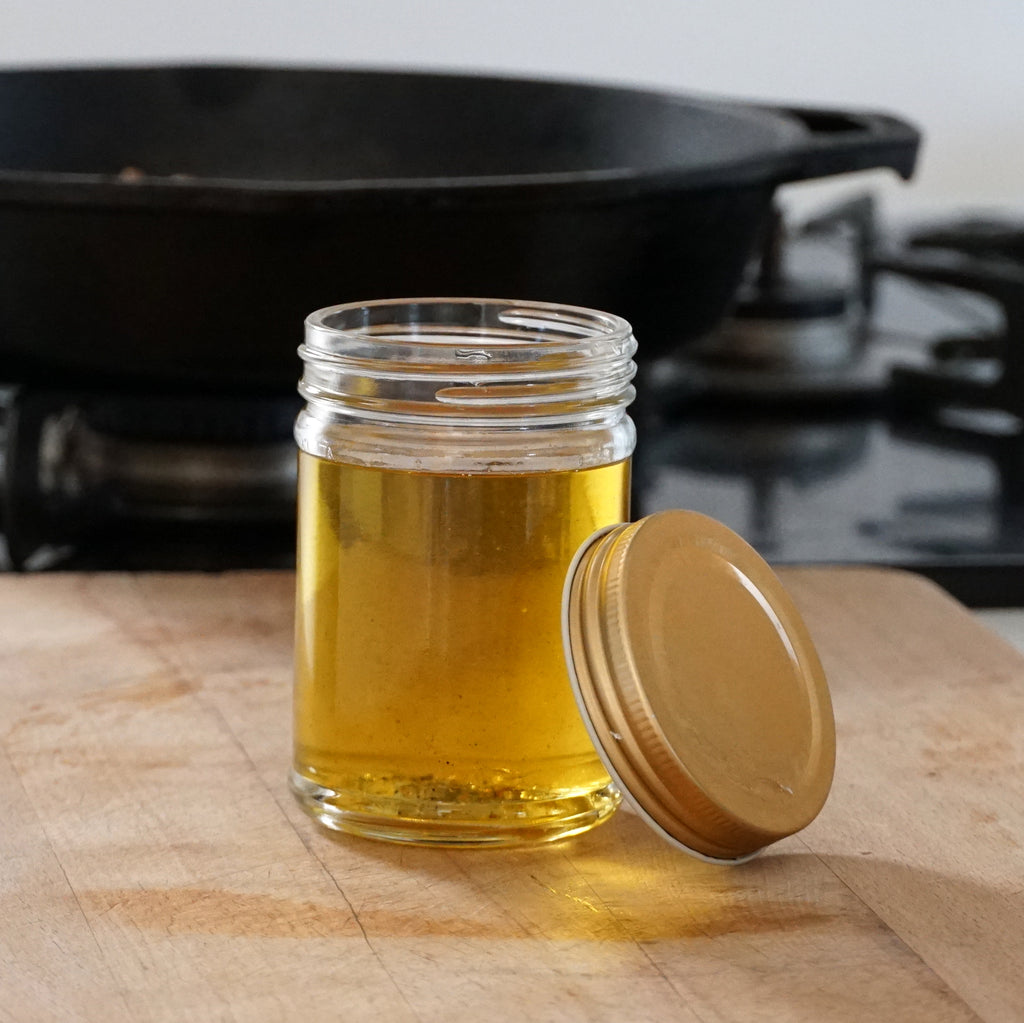
One pack of beef fat yields a whole jar of liquid gold. As long as it is warm the fat will stay liquid. Place the jar in the fridge and they will change color and texture similar to margarine. Or you can keep the jar sealed in the freezer for more than 1 year.


